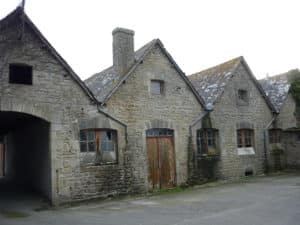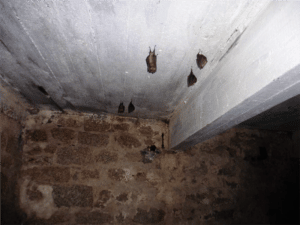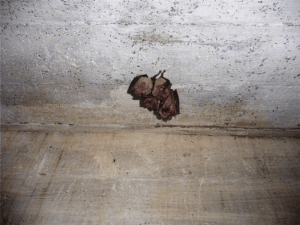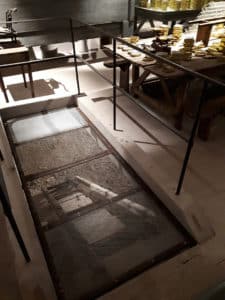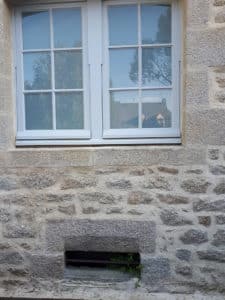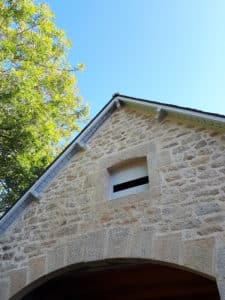On this weekend of the European Heritage Days 2022, the theme of "Sustainable Heritage and the challenges facing the sector in terms of climate change and the accelerated degradation of the environment, we wanted to share with you an initiative by the Loctudy town council to maintain biodiversity in the cannery as part of the museum project.
This is a little known fact in the history of the Loctudy cannery. Before the restoration of the factory in autumn 2019, the building housed a colony of about fifteen bats (Great Rhinolophus). The latter had taken up residence in the cellar of the factory which they accessed through a hole in the roof of the factory, which was badly damaged at the time.
During the first phase of consultation of companies, in the framework of the public calls for tender relating to the restoration project of the building, the former finance representative in charge of the project, Jean Laouénan, had discovered the presence of bats in the cellar of the factory. He then asked Jean-Jacques Chever, an active member of the Loctudy ornithology association and Christian Lioto of the Finistère section of the Mammological group of Brittany (CMB) to discuss the future of the colony within the cannery as part of the museum project.
Protected in France since 1981, the Great Rhinolophus is listed in the European Fauna and Flora DirectiveThis is why the municipal team decided to take into account the presence of this colony in the layout of the future museum. This is why the municipal team decided to take into account the presence of this colony in the layout of the future museum, thus combining the preservation of the built heritage with the protection of the natural heritage. This integration of the habitat issues of the bat colony into the restoration work on the factory was manifested in several ways.
From the point of view of scenographicIt was decided that the cellar would not be included in the area made accessible to the public as part of the visit, in order to preserve the tranquillity of the colony. On the other hand, a reflection on how to make the presence of this colony known to the general public was set up. The team worked on setting up a video equipment in the cellar with a live broadcasting system visible in the museum space, so that visitors can observe the daily life of the colony from a safe distance.
From a technical point of view, a major problem had to be resolved. Before the work was carried out, the bats accessed the factory cellar through a hole in the roof. As part of the roof restoration, a new access for the colony to its habitat had to be considered. The window in the lower part of the eastern façade of the building, which opens directly onto the cellar, was therefore unblocked to provide a new external access.
From a proactive point of view, the municipal team has taken into account the advice of Christian Lioto of the Finistère section of the Groupement mammologique de Bretagne (CMB) to install a nursery (or breeding site) under the roof of the 4e The work involved treating the existing openings to prevent predators from entering the building. The work envisaged concerned the treatment of existing openings to prevent the penetration of predators. The window of the 4e The east side of the factory was fitted with a suitable opening.
In the interest of preventionThe municipal team, in consultation with the companies working on the site, also ensured that the materials used to restore the roof and framework of the factory's attic did not contain no harmful treatment products. The installation of nesting boxes for swallows, as well as wooden cottages and plaster bricks to facilitate the establishment of other species of chiropterans, was envisaged in consultation with the Loctudy ornithology association.
Sources: report by Christian Lioto of the Finistère GMB following his visit to the cannery in 2019 and article in the Telegram written a few months later.

